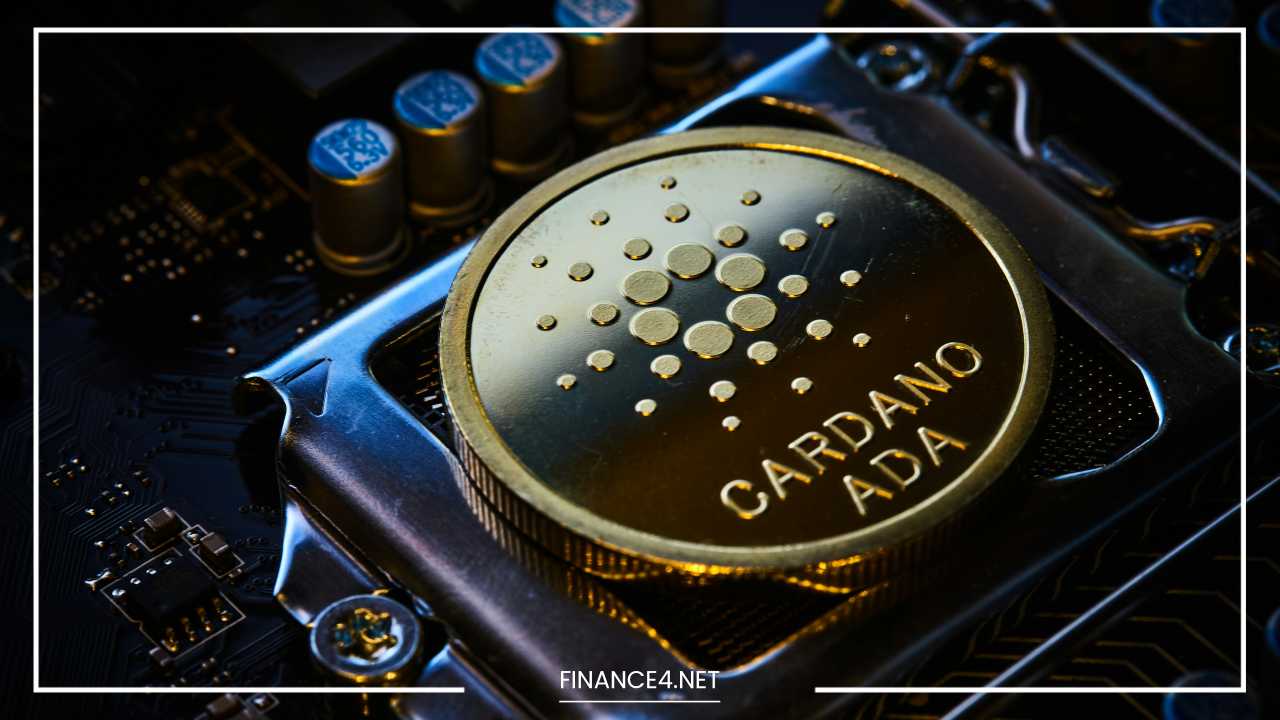Cardano (ADA): What It is, How It Differs From Bitcoin

Cardano (ADA)
Cardano (ADA): A Comprehensive Guide to Its Differences from Bitcoin
In the realm of cryptocurrencies, Cardano (ADA) and Bitcoin (BTC) stand out as two of the most influential players.
Each has carved out its niche within the digital currency space, yet they diverge significantly in their technological underpinnings, philosophical approaches, and practical applications.
While both leverage blockchain technology, their design principles and objectives illustrate the evolving nature of digital assets and decentralized technologies.
This article aims to provide an in-depth comparison of Cardano and Bitcoin, highlighting their key differences, strengths, and areas of application.
Bitcoin: The Pioneer of Cryptocurrency
Launched in 2009 by the enigmatic figure Satoshi Nakamoto, Bitcoin was the first cryptocurrency and remains the most well-known.
As a decentralized digital currency, Bitcoin was designed to operate without a central authority, offering a new paradigm for financial transactions and asset management.
- Key Features of Bitcoin:
- Decentralization: Bitcoin operates on a decentralized network, meaning it is not controlled by any single entity or intermediary. This design promotes transparency and reduces the risk of censorship or interference.
- Security: Bitcoin utilizes a proof-of-work (PoW) consensus mechanism, which requires miners to solve complex cryptographic puzzles to validate transactions and secure the network. This process makes altering the blockchain computationally expensive and difficult, thereby ensuring the integrity and security of the system.
- Limited Supply: Bitcoin has a capped supply of 21 million coins. This scarcity is a fundamental aspect of Bitcoin’s value proposition, akin to precious metals like gold. The fixed supply creates a deflationary pressure, potentially increasing the value of Bitcoin as demand rises.
- Store of Value: Often referred to as “digital gold,” Bitcoin is viewed by many as a store of value rather than a traditional currency. Its limited supply, decentralized nature, and increasing adoption contribute to its perception as a hedge against inflation and a long-term investment asset.
Cardano: A More Scalable and Feature-Rich Platform
Cardano, developed by Input Output Global (IOG) and launched in 2017, is a newer entrant compared to Bitcoin. It aims to address some of the inherent limitations of earlier cryptocurrencies by offering a more scalable, flexible, and sustainable blockchain platform.
Cardano is designed with a focus on academic rigor and research-driven development, setting it apart from its predecessors.
- Key Features of Cardano:
- Scalability: Cardano’s architecture is built to address scalability challenges through a layered approach. The platform is divided into two main layers: the Settlement Layer (CSL) for handling transactions and the Computation Layer (CCL) for smart contracts and decentralized applications (dApps). This separation allows for more efficient transaction processing and enhances the network’s scalability.
- Smart Contracts: Unlike Bitcoin, which has limited smart contract capabilities, Cardano offers a robust framework for developing and executing smart contracts. This functionality enables the creation of complex dApps and decentralized finance (DeFi) solutions, expanding the use cases for the Cardano platform.
- Sustainability: Cardano employs a proof-of-stake (PoS) consensus mechanism, which is designed to be more energy-efficient compared to Bitcoin’s proof-of-work system. In PoS, validators are chosen based on the amount of cryptocurrency they hold and are willing to “stake” as collateral, reducing the overall energy consumption required for network operations.
- Community-Driven Development: Cardano emphasizes a collaborative approach to development. It engages with a wide range of stakeholders, including researchers, developers, and community members, to guide the platform’s evolution. This inclusive approach aims to ensure that Cardano remains adaptable and aligned with user needs and academic advancements.
Key Differences Between Bitcoin and Cardano
The divergence between Bitcoin and Cardano can be attributed to several key factors, including their consensus mechanisms, scalability solutions, smart contract capabilities, and underlying philosophies.
Understanding these differences is crucial for appreciating the unique strengths and potential applications of each platform.
- Consensus Mechanism:
- Bitcoin’s Proof-of-Work (PoW): Bitcoin relies on PoW, where miners use computational power to solve complex mathematical problems and validate transactions. This method, while secure, is energy-intensive and has been criticized for its environmental impact. The PoW system requires significant electricity consumption and contributes to the carbon footprint of the Bitcoin network.
- Cardano’s Proof-of-Stake (PoS): Cardano uses PoS, which allows participants to validate transactions based on the amount of cryptocurrency they hold and are willing to stake. PoS is more energy-efficient as it does not require intensive computational work. Instead, validators are selected based on their stake, which reduces the overall energy consumption and environmental impact of the network.
- Scalability:
- Bitcoin’s Scalability Challenges: Bitcoin has faced scalability issues as its network usage has increased. The PoW mechanism can lead to slower transaction times and higher fees during periods of high demand. Bitcoin’s block size and block time constraints limit the number of transactions that can be processed per second, contributing to congestion and scalability concerns.
- Cardano’s Layered Architecture: Cardano addresses scalability through its dual-layer structure. The Settlement Layer (CSL) handles transactions, while the Computation Layer (CCL) manages smart contracts and dApps. This separation allows Cardano to process transactions and execute smart contracts simultaneously, enhancing the network’s scalability and capacity.
- Smart Contracts:
- Bitcoin’s Limited Smart Contract Capabilities: Bitcoin’s scripting language is intentionally limited to ensure security and simplicity. While it allows for basic programmable functions, it does not support complex smart contracts or the development of sophisticated dApps. Bitcoin’s primary focus remains on being a secure and decentralized store of value.
- Cardano’s Advanced Smart Contract Platform: Cardano offers a more advanced and flexible smart contract platform through its Plutus and Marlowe frameworks. These tools enable developers to create and deploy complex smart contracts and dApps with greater ease. Cardano’s support for smart contracts facilitates a wide range of applications, including DeFi, NFTs, and decentralized governance.
- Philosophy and Vision:
- Bitcoin’s Digital Gold: Bitcoin’s primary philosophy revolves around being a decentralized digital asset that functions as “digital gold.” It emphasizes security, scarcity, and store of value attributes. Bitcoin aims to provide a reliable and secure means of transferring value without reliance on traditional financial systems.
- Cardano’s Holistic Approach: Cardano’s vision extends beyond being a digital currency. It aims to create a comprehensive blockchain ecosystem that supports smart contracts, dApps, and decentralized governance. Cardano’s focus is on scalability, sustainability, and real-world applications, with the goal of creating a more inclusive and equitable financial system.
Use Cases and Applications
Both Bitcoin and Cardano have distinct use cases and applications that reflect their respective strengths and design philosophies.
- Bitcoin:
- Store of Value: Bitcoin is often seen as a hedge against inflation and economic instability. Its limited supply and decentralized nature make it an attractive option for investors seeking to preserve wealth over the long term.
- Digital Transactions: Bitcoin can be used for peer-to-peer transactions, allowing users to send and receive value across borders without intermediaries. Its decentralized nature provides an alternative to traditional banking systems and payment processors.
- Investment and Speculation: Bitcoin has become a popular asset for investment and speculation. Its volatility and potential for price appreciation attract traders and investors looking to capitalize on market fluctuations.
- Cardano:
- Decentralized Applications (dApps): Cardano’s support for smart contracts enables the development of a wide range of dApps, including DeFi platforms, gaming applications, and social networks. These applications leverage Cardano’s scalability and flexibility to offer innovative solutions.
- Decentralized Finance (DeFi): Cardano’s ecosystem supports DeFi projects that aim to provide financial services without traditional intermediaries. This includes lending, borrowing, and decentralized exchanges, which are built on Cardano’s smart contract platform.
- Governance and Voting: Cardano incorporates decentralized governance mechanisms that allow stakeholders to participate in decision-making processes. This includes voting on protocol upgrades and changes, ensuring that the platform evolves in a manner that reflects the interests of its community.
Future Prospects and Developments
Both Bitcoin and Cardano are continuously evolving, with ongoing developments and upgrades shaping their future trajectories.
- Bitcoin’s Future Prospects:
- Scaling Solutions: Bitcoin developers are exploring various scaling solutions, such as the Lightning Network, to address transaction speed and fee issues. The Lightning Network enables off-chain transactions, reducing congestion and improving scalability.
- Institutional Adoption: Bitcoin’s institutional adoption is growing, with major companies and financial institutions integrating Bitcoin into their investment portfolios and payment systems. This trend could further solidify Bitcoin’s position as a digital gold and mainstream asset.
- Cardano’s Future Prospects:
- Network Upgrades: Cardano has a roadmap of planned upgrades and improvements, including enhancements to its smart contract capabilities and scalability solutions. Ongoing development aims to make Cardano a leading platform for dApps and DeFi applications.
- Ecosystem Growth: Cardano’s ecosystem is expanding with new projects and partnerships. The platform’s focus on research and community-driven development positions it well for long-term growth and innovation.
Final Thoughts
In conclusion, Bitcoin and Cardano represent two distinct approaches to cryptocurrency and blockchain technology.
Bitcoin, as the pioneer and “digital gold,” emphasizes security, decentralization, and a limited supply. Its primary use cases revolve around being a store of value and a medium of exchange.
On the other hand, Cardano aims to address some of the limitations of earlier cryptocurrencies with its scalable, energy-efficient, and feature-rich platform.
By focusing on smart contracts, sustainability, and community-driven development, Cardano seeks to create a comprehensive ecosystem for decentralized applications and real-world use cases.
Choosing between Bitcoin and Cardano ultimately depends on individual preferences, investment goals, and desired applications.
Both platforms offer unique advantages and potential, reflecting the diverse and dynamic nature of the cryptocurrency landscape.



